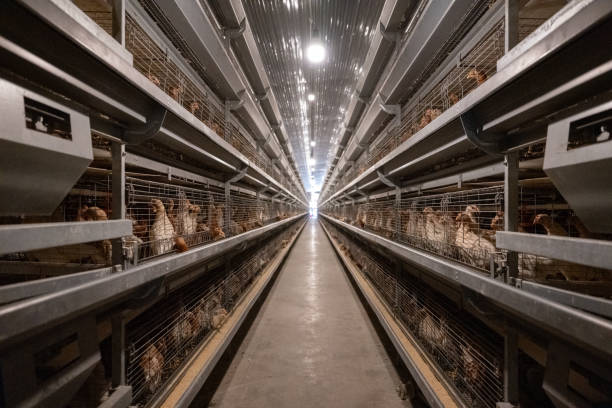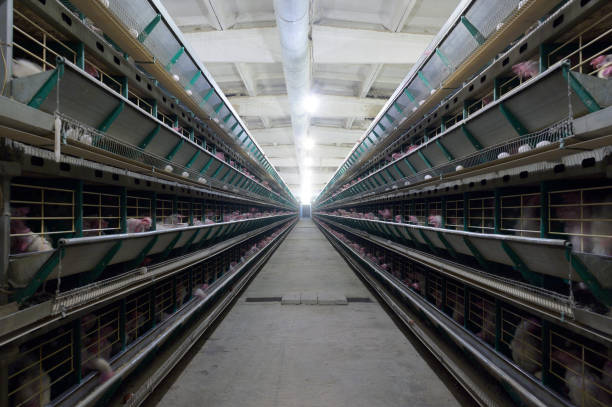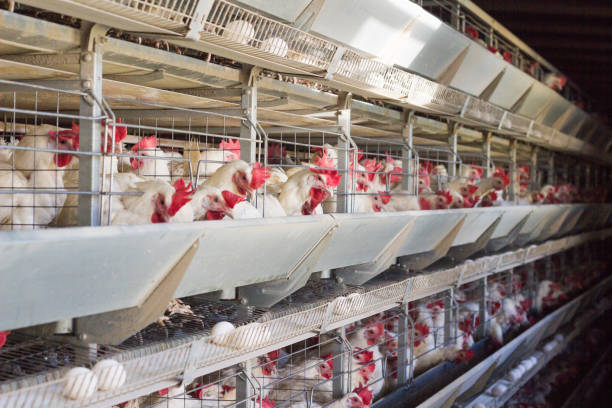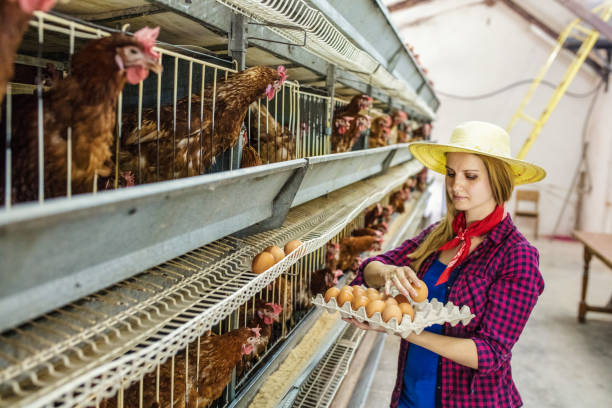
Layer Cage Systems for High Production Efficiency
Layer Cage Systems for High Production Efficiency
When it comes to modern poultry farming, efficiency and productivity are at the heart of every successful operation. As demand for eggs continues to rise globally, more farmers are turning to layer cage systems to maximize output while minimizing operational costs. These systems have evolved significantly over the past decade, combining durability, smart design, and automation to create a seamless environment for laying hens. At Livi Machinery, we’ve been engineering high-performance layer cages since 2012, helping farms across Asia, Africa, South America, and Europe transition into smarter, higher-yield operations.
But what exactly makes a layer cage system efficient? It’s not just about stacking birds in compact spaces—it’s about creating a controlled, stress-free environment where hens can thrive and lay consistently. A well-designed layer cage setup improves air circulation, reduces disease transmission, simplifies waste management, and streamlines feeding and egg collection. All these factors contribute to better feed conversion ratios, longer laying cycles, and ultimately, more profit per bird. In this article, we’ll break down how the right layer cage system can transform your poultry business and what key features you should look for when investing.
Smart Design That Supports Bird Health and Farmer Convenience
One of the biggest misconceptions about caged poultry is that it compromises animal welfare. But with today’s advanced designs, modern layer cages actually promote better health and comfort than many traditional free-range setups—when done right. The secret lies in thoughtful engineering. For example, our cages at Livi use galvanized wire mesh with an anti-rust coating that lasts over 15 years, ensuring durability even in humid or corrosive environments. The slope of the floor is carefully calculated so eggs roll gently forward into collection trays, reducing breakage and keeping them clean.

Another crucial feature is space optimization. We offer various configurations—from 4-tier to 8-tier stacked systems—that make full use of vertical space without overcrowding. Each hen gets between 600–700 cm² of living area, which meets international standards and keeps birds calm and productive. Ventilation slots are built into each tier, allowing fresh air to circulate evenly and preventing heat buildup in tropical climates.
What really sets our systems apart, though, is automation. Automated feeding lines deliver precise amounts of feed at scheduled times, reducing waste and labor. Manure belts run beneath each level, removing droppings daily before ammonia levels rise. And egg collection rollers minimize human contact, lowering contamination risk and saving hours of manual work. Think of it as turning your farm into a precision-run factory—only one that respects both biosecurity and bird behavior.

Scalability and Long-Term Value: Building a Future-Proof Farm
Whether you’re managing a small family-run coop or expanding into a commercial-scale egg production facility, scalability matters. One of the greatest advantages of choosing a modular layer cage system is its flexibility. You can start with a few hundred birds and add sections as demand grows, all using compatible components from the same product line. This phased investment model lowers upfront costs and gives you time to refine management practices.
Durability is another major factor in long-term value. Cheaply made cages may save money initially but often lead to higher maintenance, broken parts, and lost production. Our cages are tested under extreme conditions—high humidity, frequent cleaning, heavy bird traffic—and still maintain structural integrity after ten years of continuous use. Galvanization protects against rust, welds are strong and consistent, and support frames are reinforced to handle full loads without sagging.
And because we provide end-to-end service—from barn layout planning to on-site installation training—you don’t need to guess how everything fits together. Our engineers help assess your land, climate, and target output to recommend the optimal setup. That means fewer mistakes during construction, faster commissioning, and sooner time-to-revenue. Plus, having local technical support available for troubleshooting ensures smooth operation year-round.
Maximizing Output Without Sacrificing Quality
High production doesn’t mean cutting corners on egg quality. In fact, properly managed layer cage farms often produce cleaner, more uniform eggs compared to floor-raised systems. Why? Because hens aren’t walking through litter or manure, so their feathers stay dry and nesting areas remain hygienic. Eggs go straight from nest to tray, avoiding contact with dirt or feces.
We also integrate features like dimmable LED lighting to simulate natural daylight patterns, triggering consistent laying behavior. Light intensity and duration can be programmed based on flock age, supporting both growth phases and peak production periods. Some customers pair our systems with climate controllers and tunnel ventilation units, especially in hot regions, further stabilizing temperatures and reducing heat stress—a known cause of reduced egg size and shell quality.
On the data side, progressive farmers are now using monitoring sensors inside cage houses to track temperature, humidity, feed consumption, and mortality rates in real time. When combined with good recordkeeping, this information helps fine-tune routines for maximum performance. For example, noticing a drop in water intake might signal early illness, allowing quick intervention before it spreads. Preventive care like this keeps flocks healthier and production steady.
If you’re ready to upgrade your poultry operation with a reliable, high-efficiency layer cage system, we’d love to talk. Share your barn dimensions, target capacity, and regional challenges with us—we’ll design a custom solution tailored to your needs. Send us a message through our website or leave your contact info below, and one of our experts will get back within 24 hours with recommendations and pricing options.
Frequently Asked Questions
What are the benefits of using layer cage systems?
Layer cage systems improve egg production by offering a clean, controlled environment. They reduce disease risk, make feeding and cleaning easier, allow for higher stocking density, and enable automation—all leading to lower labor costs and higher profitability.
How much space does each hen need in a cage?
Each laying hen should have at least 600–700 square centimeters of space. This complies with most global standards and supports healthy, stress-free birds capable of sustained egg output.
Can layer cages be automated?
Yes, fully automated systems include auto-feeders, manure removal belts, egg collection conveyors, and even lighting controls. Automation greatly reduces daily labor and increases consistency in farm management.
Are layer cages suitable for small farms?

Absolutely. Many models are modular and scalable, making them ideal for smallholders looking to grow gradually. Even a single-tier cage unit can boost efficiency over floor systems.
Do layer cages affect egg quality?
Not if managed correctly. In fact, eggs from cage systems tend to be cleaner and less prone to damage because they roll directly into collection trays, avoiding contact with waste or bedding.
How long do layer cages last?
High-quality galvanized cages like ours typically last 12–18 years, depending on maintenance and environmental conditions. Proper coatings prevent rust and ensure longevity even in coastal or humid zones.
What types of layer cages are available?
Common types include battery cages (multi-tier), enriched colony cages (with perches and scratch pads), and slatted floor systems. Farmers choose based on budget, regulations, and animal welfare goals.
Is installation support provided?
Yes, Livi offers full-service assistance including site assessment, layout planning, equipment delivery, and technician-led installation guidance to ensure proper setup.
Can I customize the cage size?
Definitely. We manufacture cages to fit your building dimensions and production goals. Whether you want 4-tier, 6-tier, or special access doors, customization is part of our standard service.
How do I maintain a layer cage system?
Routine maintenance includes checking welds, lubricating moving parts, cleaning feed lines, and inspecting manure belts. With regular care, the system operates smoothly for years with minimal downtime.
